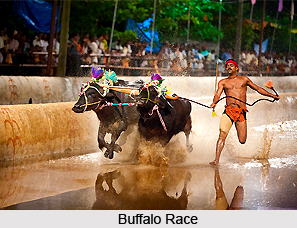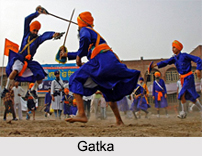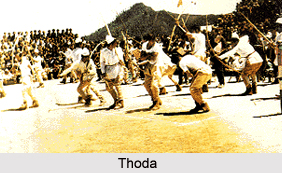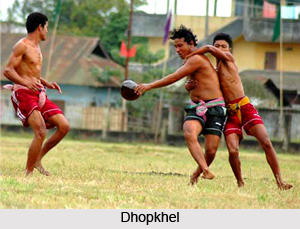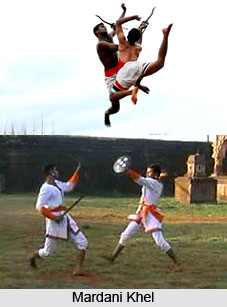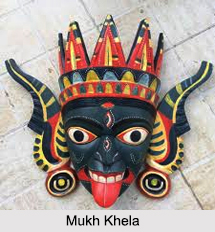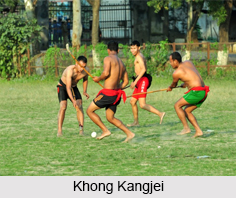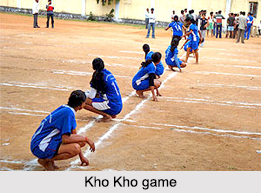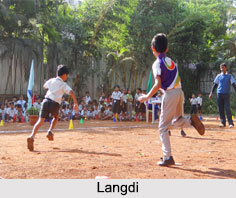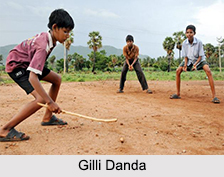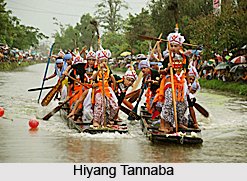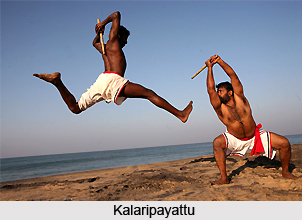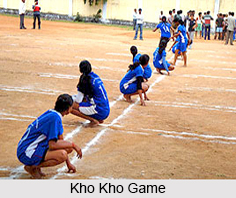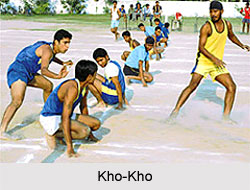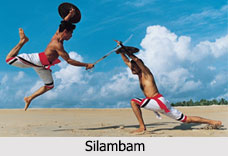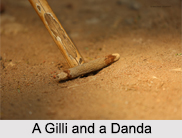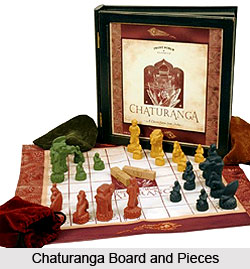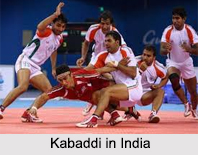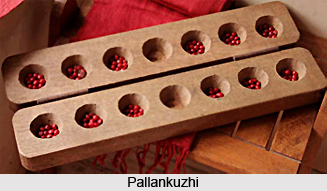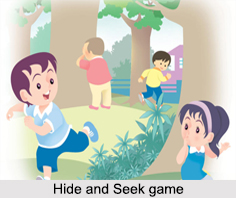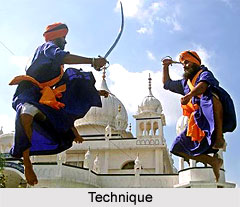 Technique of Gatka generally refers to the proper utilization of the weapons used in gatka. The very word gatka refers to the wooden stick used in the purpose of training known as soti that is well equipped with a basket hilt. For all the martial arts techniques it is essential to correctly use huge array of melee (hand-to-hand) weapons. The basis of this sport form actually refers to the coordination and method of feet movement, body, arms, feet and weapons correctly, in unison. The technique of gatka also starts with the simple four step movement known as Panthra. This is actually a coordination and balance exercise and needs to be repeatedly practised. The movement also requires equivalent and synchronized use of both hands and makes one ambidextrous. This movement, which is basic, is followed while using all weapons and also imparts great balance to practitioners.
Technique of Gatka generally refers to the proper utilization of the weapons used in gatka. The very word gatka refers to the wooden stick used in the purpose of training known as soti that is well equipped with a basket hilt. For all the martial arts techniques it is essential to correctly use huge array of melee (hand-to-hand) weapons. The basis of this sport form actually refers to the coordination and method of feet movement, body, arms, feet and weapons correctly, in unison. The technique of gatka also starts with the simple four step movement known as Panthra. This is actually a coordination and balance exercise and needs to be repeatedly practised. The movement also requires equivalent and synchronized use of both hands and makes one ambidextrous. This movement, which is basic, is followed while using all weapons and also imparts great balance to practitioners.
Gatka, which is a martial art technique used by Sikhs, is generally taught with recurring accompaniment and the object is to achieve fluid, natural and flowing movement, without indecision, uncertainty or worry. All the movements actually involve blocking and attacking methods, and are all based on the position of feet, arm and weapon(s) during the Panthra dexterity exercises. Many weapons are taught with special processes and methods, in addition to exercises of Panthra.
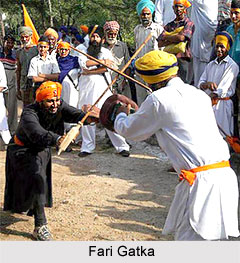 The very common weapon that is used for the sport of Gatka is lathi (a stick of various lengths), but the use of other weapons are also taught. The best combination of weapon that is considered for Gatka practitioners of the past and present is the shield and sword. With experience, the practitioners learn in great details about the special "chambers" and also about other techniques that are typical and unique to certain weapons like the khanda (two-edged sword), the tabar (axe) and the barcha (spear).
The very common weapon that is used for the sport of Gatka is lathi (a stick of various lengths), but the use of other weapons are also taught. The best combination of weapon that is considered for Gatka practitioners of the past and present is the shield and sword. With experience, the practitioners learn in great details about the special "chambers" and also about other techniques that are typical and unique to certain weapons like the khanda (two-edged sword), the tabar (axe) and the barcha (spear).
The exercise of panthra requires continuous, non stop movement and also, there are no particular preset "moves" similar to karate in Gatka. Somewhat, the methods of turning, moving, attacking, stopping and also defending are learnt and the application depends on situations at the time. The panthra exercise is actually practised at the same time as Jaap Sahib Bani prayer is being sung. Also, a three-beat-per-cycle is played by a drummer at the same time. This assists in developing natural and flowing co-ordination. Just like the various "beats cycles" in Jaap Sahib, advance Gatka incorporates these different cycles and rhythms.
